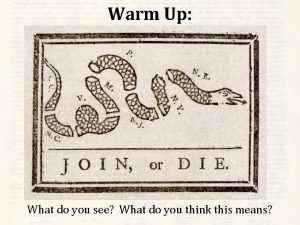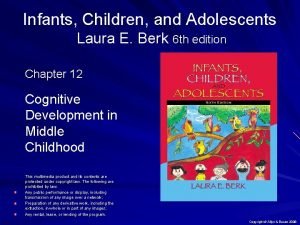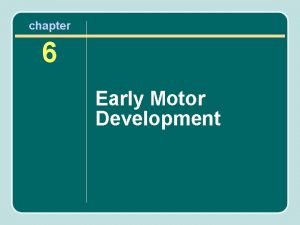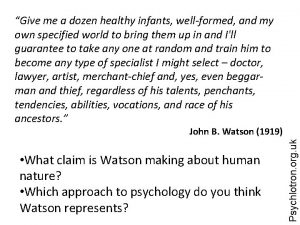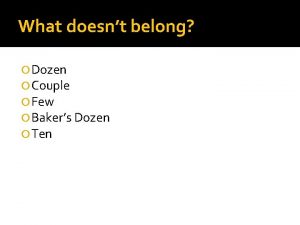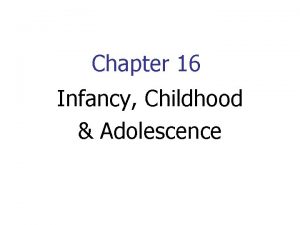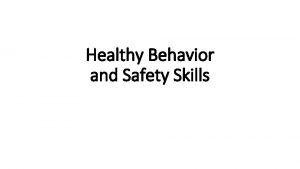Give me a dozen healthy infants wellformed and



















- Slides: 19

"Give me a dozen healthy infants, well-formed, and my own specified world to bring them up in and I'll guarantee to take any one at random and train him to become any type of specialist I might select – doctor, lawyer, artist, merchant-chief, and, yes, even beggar-man and thief, regardless of his talents, penchants, tendencies, abilities, vocations, and race of his ancestors. “ John B. Watson 1878 -1958

K An approach to psychology that emphasizes observable measurable behavior. . .

K Behaviorism

K Behaviorism Summary of Behaviorism History Examples Comparison Webliography

R Summary of theory In relationship to technology BEHAVIORISM: Correct responses must be followed up with immediate reinforcement or feedback. TECHNOLOGY: Immediate feedback can be given in the form of sounds, animation, color and audio. BEHAVIORISM: The learner has learned something when you can observe his behavior. TECHNOLOGY: The score or progression element and the evaluation element of a program is a way to observe the learner and to see if the learner has learned. BEHAVIORISM: There must be definite goals to accomplish. TECHNOLOGY: The first level of a program must be mastered before the learner can go on to a next level.

R Summary of theory … continued BEHAVIORISM: The environment in which the learning is taking place, must be controlled. TECHNOLOGY: The stimuli can be changed in a program if the response is not satisfactory. BEHAVIORISM: In Behaviorism a transfer of knowledge is taking place. TECHNOLOGY: Problems can be randomized and the same problem can be given over and over again till the learner gets it right. (repetition) BEHAVIORISM: Extrinsic motivation is playing a big role in behaviorism. TECHNOLOGY: The Learner wants to get a better score and he is extrinsically motivated.

R Summary of theory … continued BEHAVIORISM: Behaviorism is all about a stimulus and response action. TECHNOLOGY: There is a automatic adjustment level in computer software. BEHAVIORISM: Learning is the change of behavior where stimuli in the environment has an influence on the learning and behavior or the learner. TECHNOLOGY: There is a stimuli the entire time (drills, assimilation's and tutorials). BEHAVIORISM: Learning is taking place through memorization. TECHNOLOGY: Drill programs will be effective because of repetition.

S History PAVLOV (1849 - 1936) Studied animals’ responses to conditioning (dog & bell). WATSON (1878 - 1958) Studied stimulus-response reactions to various situations (rats & maze). SKINNER (1904 - 1990) Believed you could take an animal / person, and respond with a pattern of positive reinforcement to repeat a behavior or negative reinforcement to stop a behavior.

K Examples of Behaviorism • The best known form • of behaviorism is classical conditioning, and the most famous example is Pavlov’s dog. Pavlov conditioned, or trained, his dog to react at the sound of a bell.

K Classical Conditioning Video Clip of “Seabiscuit”

K Aversion Therapy • In order to get patients to behave according to the “norm”, some researchers, parents and teachers have applied aversion therapy. A negative reward for unwanted

R Comparison • BEHAVIORISM • COGNITIVISM • CONSTRUCTIVISM • SITUATED LEARNING • ACTIVITY STRUCTURES

R Comparison BEHAVIORISM – Behaviors can be observed and measured. It views the mind as a "black box" in the sense that response to stimulus can be observed quantitatively, totally ignoring the possibility of thought processes.

K Comparison COGNITIVISM - Learning is an active process, learners construct new ideas or concepts based on their knowledge. The learner selects information, constructs hypotheses, and makes decisions, relying on a cognitive structure.

S Comparison CONSTRUCTIVISM – Learners construct their own interpretation based on their perceptions of experiences; an individual's knowledge is a function of prior experiences, and beliefs.

R Comparison SITUATED LEARNING – Learning is a function of the activity, context and culture in which it occurs (i. e. it is situated). This contrasts with traditional classroom learning activities which involve knowledge that is often presented in an abstract form and out of context. Social interaction is a critical component of situated.

K Comparison ACTIVITY STRUCTURES – Is NOT a model, lesson plan, step-by-step directions, or a prescription. An activity structure is a "thinking tool" in which teachers are Instructional Designers. It depicts only what students DO without reference to the content area or the level of learning occurring.

Webliography - ALL 8 http: //www. usask. ca/education/coursework/802 p apers/mergel/brenda. htm#The%20 Basics%20 of% 20 Behaviorism 8 http: //hagar. up. ac. za/catts/learner/hwol/1998/Be haviorism. htm 8 http: //www. forerunner. com/forerunner/X 0497_D e. Mar_-_Behaviorism. html 8 http: //tip. psychology. org/bruner. html 8 http: //www. qesn. meq. gouv. qc. ca/cc/projects/stru ctures. htm 8 Seabiscuit, Universal Studios and Dream. Works Pictures, 2003

By: Rich Reed, Kent Yamasaki and Susie Kester
 Give me a dozen healthy infants
Give me a dozen healthy infants Healthy food healthy mind journal
Healthy food healthy mind journal Healthy soil healthy life poster ideas
Healthy soil healthy life poster ideas Healthy community poster
Healthy community poster Healthy nurse healthy nation
Healthy nurse healthy nation What is the main idea of give me liberty or give me death
What is the main idea of give me liberty or give me death Infants and children 8th edition
Infants and children 8th edition Infants, children and adolescents 8th edition
Infants, children and adolescents 8th edition Creative curriculum intentional teaching cards
Creative curriculum intentional teaching cards Infants, children, and adolescents 8th edition
Infants, children, and adolescents 8th edition Infants and children 8th edition
Infants and children 8th edition Intercostal retractions in infants
Intercostal retractions in infants Infants age range
Infants age range Sentinel injuries
Sentinel injuries Art ideas for senior infants
Art ideas for senior infants Intellectual development of infants chapter 9
Intellectual development of infants chapter 9 Infants display a wide range of emotional expressions
Infants display a wide range of emotional expressions Derotative righting
Derotative righting Length board for infants
Length board for infants Chrisomes infants
Chrisomes infants





